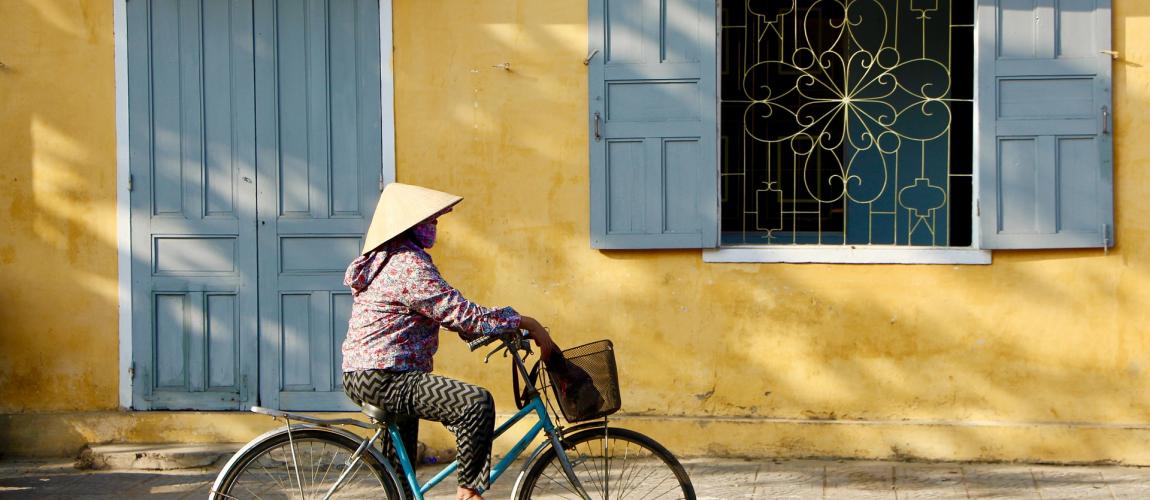Gender & Transport Projects

Photo Credit: Image by Sarah N from Pixabay
New Public-Private Partnerships Gender Online Resources: Because of varying societal roles and household responsibilities, public-private partnership (PPP) projects can have different impacts on women and men. It is therefore crucial that the knowledge and awareness of gender implications be thoroughly integrated into every step of the PPP project cycle. To provide guidance, the Public-Private Partnership Resource Center curated a rich and diverse suite of key resources on the topic, segmented by agriculture, education, energy, and many more infrastructure project areas.
We welcome your feedback so we can continue to expand on this research and online tool, please email ppp@worldbank.org.
Access to safe and affordable transportation has direct impact on the economic opportunities and quality of life of the affected communities. All these benefits apply to both men and women, but tend to affect women differently. Due to their different social and economic roles and activities women have different transport needs, priorities and transport patterns than men. Given their responsibilities for fetching food, water and fuel, women tend to spend a lot of their time traveling (often by foot and together with children), are more likely to make more but shorter trips than men with multiples stops at shops, markets, schools, health care providers and childcare facilities and have a greater need for affordable fares, good lighting and safety. Transport projects that take these differences into account can bring significant benefits to women in terms of increased mobility, access to basic services, employment and education opportunities.
Multinational Development Banks (MDBs) as well as bilateral and national development banks and many other leading development organizations have a growing commitment to finance and support infrastructure projects and programs that incorporate gender considerations. They have developed a number of guidelines, practical tools, policies, and manuals that are based on best practice and aim to facilitate a gender-inclusive approach. Key recommendations for integrating gender considerations in infrastructure projects and programs are the following: 1. Analyze gender aspects during the preparation and appraisal stage, e.g. by collecting sex-disaggregated data, including women and men at an early stage in the community-wide consultations and by incorporating gender aspects into the various analyses and assessments; 2. Translate the results into the design of projects and programs, e.g. by designing gender-responsive policies, bidding documents and contracts; 3. Utilize meaningful performance indicators to monitor and evaluate actions designed to narrow gender gaps. Following this approach gender commitments are increasingly integrated into PPP Legal and Regulatory Frameworks as well as across the PPP project cycle of individual PPP projects. Read more. Click here to find out more about: Action on Equality: TfL’s commitments to 2020, published by Transport for London (TfL) - Initiative to ensure gender-responsive transport planning and operation as well as a more balanced workforce, including gender-equal recruitment, increase of female applicants for apprenticeship programs, and providing mentorship to women. The extent to and way in which gender considerations could be incorporated into the design and implementation of an infrastructure project depend at least to some degree on the specific infrastructure sector. Listed below are guidance materials, toolkits and other online resources that were developed by international organizations, national governments and non-government organizations to mainstream gender into transport projects:Integrating Gender Across the PPP Project Cycle
Key Topics Across Infrastructure Sectors
Sector-Specific Legislation, Policies, Guidelines, Strategies
Sector-Specific Gender Tools
Sector-Specific Case Studies
The inclusion of or reference to any materials on this website does not mean that they are in any way approved, endorsed or recommended by the World Bank, the Public-Private Partnership Resource Center or by the donors who support the website. The Public-Private Partnership Resource Center accepts no responsibility or liability whatsoever with regard to the materials on this website. The materials are:
- not necessarily comprehensive, complete, accurate or up to date;
- sometimes linked to external sites over which the Public-Private Partnership Resource Center has no control and for which the Public-Private Partnership Resource Center assumes no responsibility;
- reference materials for information ONLY. They should not be relied on as a substitute for specific legal advice (if you need specific legal advice, you should always consult a suitably qualified professional).
The goal of the Public-Private Partnership Resource Center is to keep the information on this website timely and accurate. If errors are brought to our attention, we will try to correct them. Please contact us at ppp@worldbank.org.
Updated: July 22, 2024
Related Content
Additional Resources
Public-Private Partnerships for Transport
Examining public-private partnership projects through a gender lens
Partner Resources
Women, Business and the Law 2024 is the tenth in a series of annual studies measuring the enabling environment for women’s economic opportunity in 190 economies. Women, Business and the Law 2024 introduces a new framework for measuring the implementation gap across three pillars: legal frameworks, measuring laws; supportive frameworks, measuring policy mechanisms to implement laws; expert opinions, shedding light on experts’ perception of women’s outcomes.
